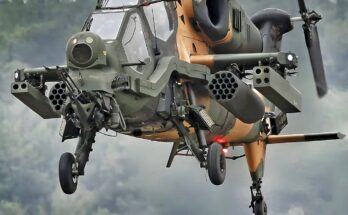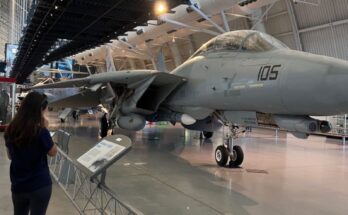
The CH-53 Sea Stallion, designed and built by Sikorsky Aircraft, is one of the most recognizable heavy-lift helicopters in the history of the United States Marine Corps (USMC). Since its introduction in the mid-1960s, it has served as a critical backbone for transporting troops, equipment, and supplies in both combat and humanitarian operations. The Sea Stallion’s rugged construction and impressive lifting power made it an essential asset during decades of service.
Sikorsky developed the CH-53 in response to the Marine Corps’ need for a helicopter capable of lifting heavy loads, including artillery, vehicles, and large numbers of personnel, directly from ship to shore. First flown in 1964 and officially entering service in 1966, the helicopter quickly proved itself as a reliable workhorse. With its three turboshaft engines, large six-bladed main rotor, and rear-loading ramp, it was able to carry payloads of up to 8 tons, making it one of the most powerful helicopters of its time.
During the Vietnam War, the Sea Stallion became a vital component of Marine operations. It transported troops into combat zones, retrieved downed aircraft, and supplied remote bases with ammunition and fuel. Its ability to operate in harsh weather and rugged terrain gave U.S. forces a significant logistical advantage. The helicopter also showed remarkable survivability, returning crews safely even after sustaining battle damage.
Over the years, several variants of the CH-53 were introduced to extend its capabilities. The CH-53D improved upon the original design with more powerful engines and better avionics, while the CH-53E Super Stallion, introduced in the 1980s, featured a seven-bladed main rotor and even greater lift capacity. These upgrades allowed the aircraft to move heavier loads, such as armored vehicles and larger artillery pieces, directly into combat areas. The CH-53E became especially important in supporting amphibious operations, where the ability to deliver supplies quickly from ship to shore is critical.
The Sea Stallion also played an important role in humanitarian missions. Its heavy-lift capacity made it valuable in delivering food, water, and medical supplies during natural disasters. The helicopter’s ability to operate in remote areas without the need for runways meant it could reach communities cut off by floods, earthquakes, or hurricanes.
Within the USMC, the CH-53 has long been seen as a symbol of reliability and strength. Marines often refer to it as the “workhorse of the Corps” due to its versatility and endurance. Despite being a large helicopter, it has proven surprisingly agile, capable of operating from amphibious assault ships and landing zones with limited space.
While the CH-53 Sea Stallion has served for decades, the Marine Corps has begun transitioning to the CH-53K King Stallion, an advanced version designed to carry even heavier loads with modernized avionics and improved efficiency. Still, the legacy of the CH-53 Sea Stallion remains deeply ingrained in Marine Corps aviation history. It bridged the gap between traditional helicopter transport and modern heavy-lift capability, serving faithfully across wars, peacekeeping missions, and disaster relief operations worldwide.
The CH-53 Sea Stallion stands as a testament to Sikorsky’s engineering and the Marine Corps’ need for dependable, powerful aircraft. Its long service life reflects not only its design excellence but also its unmatched importance in USMC operations for over half a century.


